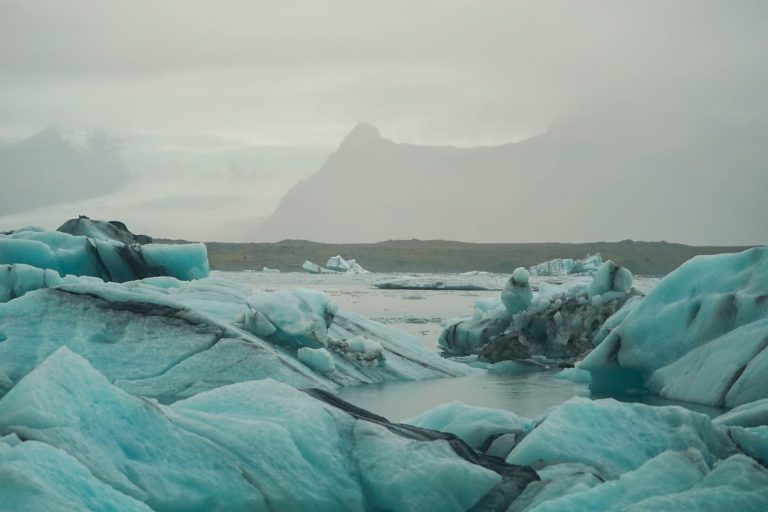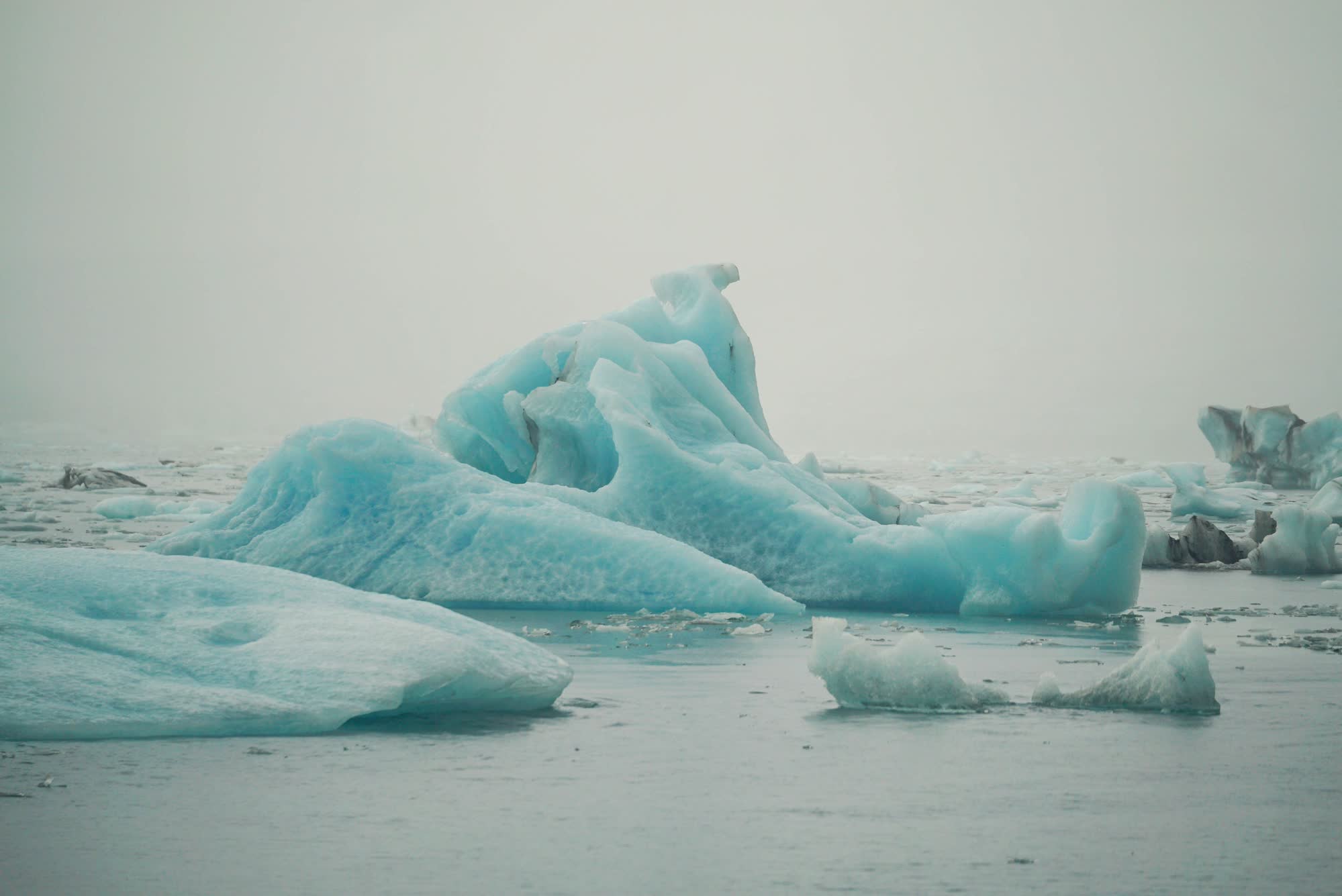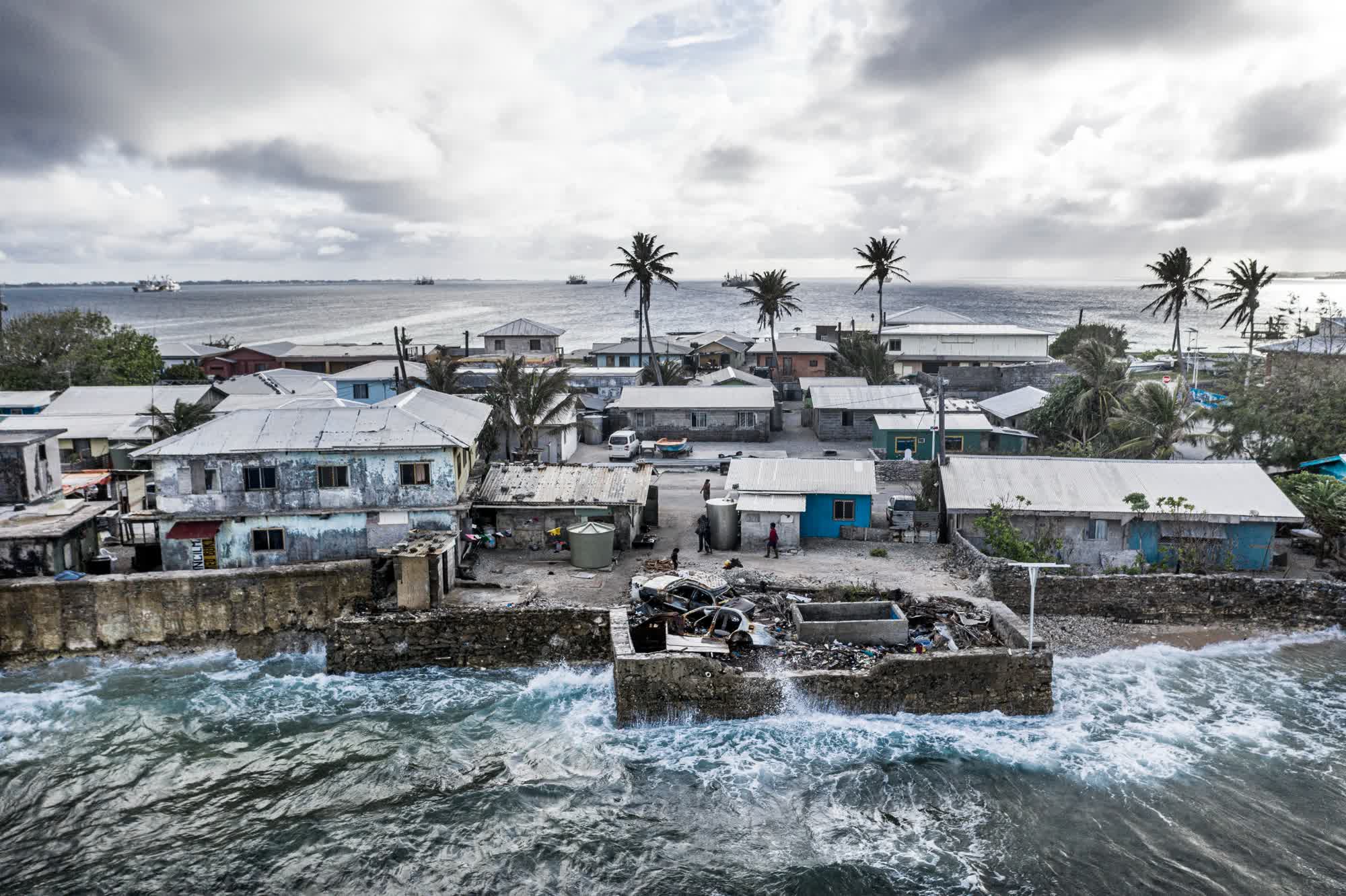
[Melting ice in Iceland is flowing away, lightening the load on the rock below and causing the ground to rise. The huge scale of melting in nearby Greenland is also causing water to move away because of the reduced gravitational pull on the ocean. In parts of Iceland, the land is rising by almost 4 centimetres a year, threatening the livelihoods of fishers who face the risk of shipwreck. Meanwhile, the lost ice contributes to sea-level rise elsewhere.]
By Ivana Kottasová and Temujin Doran
Bringing the catch home is becoming an increasingly treacherous task in this Icelandic fishing village. As much of the world worries about sea levels rising and swallowing up land, the community here has the opposite problem — the sea level is falling.
Sea lagoons surrounding the village of Höfn are becoming shallower and harder to navigate. The tides come in and out with less force than they used to, causing the channel that fishing boats pass through to slowly fill up with sediment.
“The big ships, when they’re coming fully laden with capelin or herring, the keels of the ships are going to be quite close to the bottom. So there is an increased danger that they will hit the bottom, which could lead to leaks in the hull, financial loss or a shipwreck,” said Þorvarður Árnason, director of the University of Iceland’s research center in Höfn.
“The 60 or so men working on the ships, they are all local,” Árnason said. “The idea of a shipwreck is terrifying.”

Höfn sits in the shadow of Iceland’s largest ice cap, Vatnajökull. For centuries, the mighty weight of Vatnajökull has compressed the ground underneath it. But global warming is causing these ice caps and glaciers to melt rapidly, now faster than at any point in the last 200 years. As they disappear, the ground is literally rising.
Where Iceland gets its name from is no mystery — around a tenth of the country is covered by glaciers. But the Arctic is experiencing the most dramatic temperature rise in the world, and as a result, Iceland is now losing around 10 billion tons of ice each year, according to NASA. At this rate, Iceland could be iceless by 2200.
GPS measurements show the ground in Höfn has been rising by as much as 1.7 centimeters per year. The closer the land is to the melting glacier, the faster the rise — some 20 minutes’ drive to the north, the ground is rising by as much as 3.8 centimeters every year.
In Höfn, Árnason has been watching the developments with concern. The village is tied to the fishing industry and most families there depend on it. If the boats can’t get in, it would almost certainly mean financial ruin.
But there’s another reason that the sea level around Iceland is dropping: Gravity.
The rapid melt of glaciers and the Greenland ice sheet are causing sea levels to rise in most of the world, purely by adding huge volumes of water into the ocean.
But this rise hasn’t been uniform. Counterintuitively, Greenland and territories around it, where the melt is happening the most, are actually experiencing a drop in sea levels, and not only because of this rising-ground phenomenon.
Anything that has mass has its own gravity. The larger it is, the more gravity it has.
“The ice sheet is so heavy that it pulls the ocean towards it, due to gravity. But if the ice sheet melts away, this attraction starts weakening and the water moves away,” said Thomas Frederikse, a postdoctoral fellow at the NASA Jet Propulsion Laboratory.
“The further away you are from the ice sheet, the more water you get.”
NASA scientists estimate that if average global sea level climbs by 1 meter — which would be in part due to ice melting on Greenland — it would actually fall by 20 centimeters around Iceland. That’s because it sits so close to Greenland, where this gravitational change is taking place.
And while melting on Iceland itself will play a role in global sea level rise, it holds a tiny amount of water compared to the world’s largest ice sheets.
If all the glaciers in Iceland were to melt, it would increase global average sea level by 1 centimeter. On the other hand, Greenland and Antarctica have enough ice to lead to catastrophic impacts — if all of Greenland were to melt, it would add 7.5 meters to global sea levels. Antarctica has enough ice on the continent to increase sea levels by nearly 60 meters, if it all melted.
Ice melt accounts for around two-thirds of the world’s sea level rise. But climate change is hitting our oceans in yet another way.
As humans emit more greenhouse gases — primarily by burning fossil fuels like coal, oil and natural gas for energy — sea temperatures are rising too, and that extra heat is making the ocean expand.
When water gets warmer, its molecules move faster and spread out more, which increases its volume. Scientists estimate that roughly one-third of global sea level rise can be attributed to this expansion.

The latest scientific evidence shows that even if the world stopped burning fossil fuels today, sea level rise is still locked in until 2050. But future emissions will have huge consequences beyond 2050.
If the world warms by 3 to 4 degrees Celsius above levels before industrialization, scientists warn that average global sea level rise could reach 70 centimeters by the end of century, threatening the viability of human life in some places. Temperature rise is already at 1.2C.
As the fishermen in Höfn grapple with the consequences of shallower seas, people on the Marshall Islands have been watching the sea around them rapidly rise.
The Marshalls are made up of five islands and 29 low-lying, ring-shaped atolls. As ice melts on the other side of the globe in places like Greenland and Iceland, the resulting sea level rise has forced people here to change their way of life and think about their future in a more existential way.
“There’s no mountains, there’s ocean on either side of you and the land is really thin and small,” said Kathy Jetn̄il-Kijiner, a writer and climate envoy for the Marshall Islands Ministry of Environment.
“The shoreline is getting shorter and shorter, it’s a real threat to the physical existence of our land.”
The average elevation above sea level on the Marshalls is just 2 meters. Here, every centimeter matters.
Globally, the average sea level has risen by more than 20 centimeters since the start of the 20th Century and has picked up pace in the last three decades. Since 1993, level have risen by 2.8 to 3.6 millimeters, on average. In the same time, the Marshalls experienced around double that, with a rise of 7 millimeters, according to an Australian government climate report.
Sea level rise here is causing flooding, which is becoming increasingly more frequent. Waves regularly wash over the protective barriers that line the shore.
Streets are getting flooded more frequently. Drinking water gets polluted. Livelihoods are destroyed. Jetn̄il-Kijiner says the threat of a flood is always looming in people’s minds.
It’s a constant reminder of the existential threat this nation faces from climate change, and that they need new tools to adapt, fast.
A joint study between the Marshallese government and the World Bank outlined the country’s options, from building sea walls to reclaiming land and raising buildings. The more intense responses include raising entire islands and, as a last resort, migrating.
“We have to be on alert. We just have to be prepared that we may have to shore up, people having to go home and leave workplaces midway through so that they could take care of their houses and their gardens or things like that because they got flooded,” Jetn̄il-Kijiner said.
Her family, like most of those residing on the islands, built a concrete wall to shield their home from the constant flooding. The barrier they used to have, made of tin panels, was no longer enough.
The new wall is holding up — for now.
“But who knows how long that will work? The impacts are going to keep coming because we aren’t scaling back [global] emissions as fast as we should,” she said. “Here, it’s gotten so severe that we’re now exploring really extreme options of adaptation, like elevating our islands, even having to build completely new islands.”
According to the joint study, 40% of buildings in the capital city of Majuro will be endangered if sea level rises by 1 meter, with 96% of the city at risk of frequent flooding.
“That’s completely unfair. We shouldn’t have to do that,” Jetn̄il-Kijiner said.
“These are extreme measures that will cost us billions of dollars, all because of something we had contributed nothing to.”
___________________
Courtesy: CNN